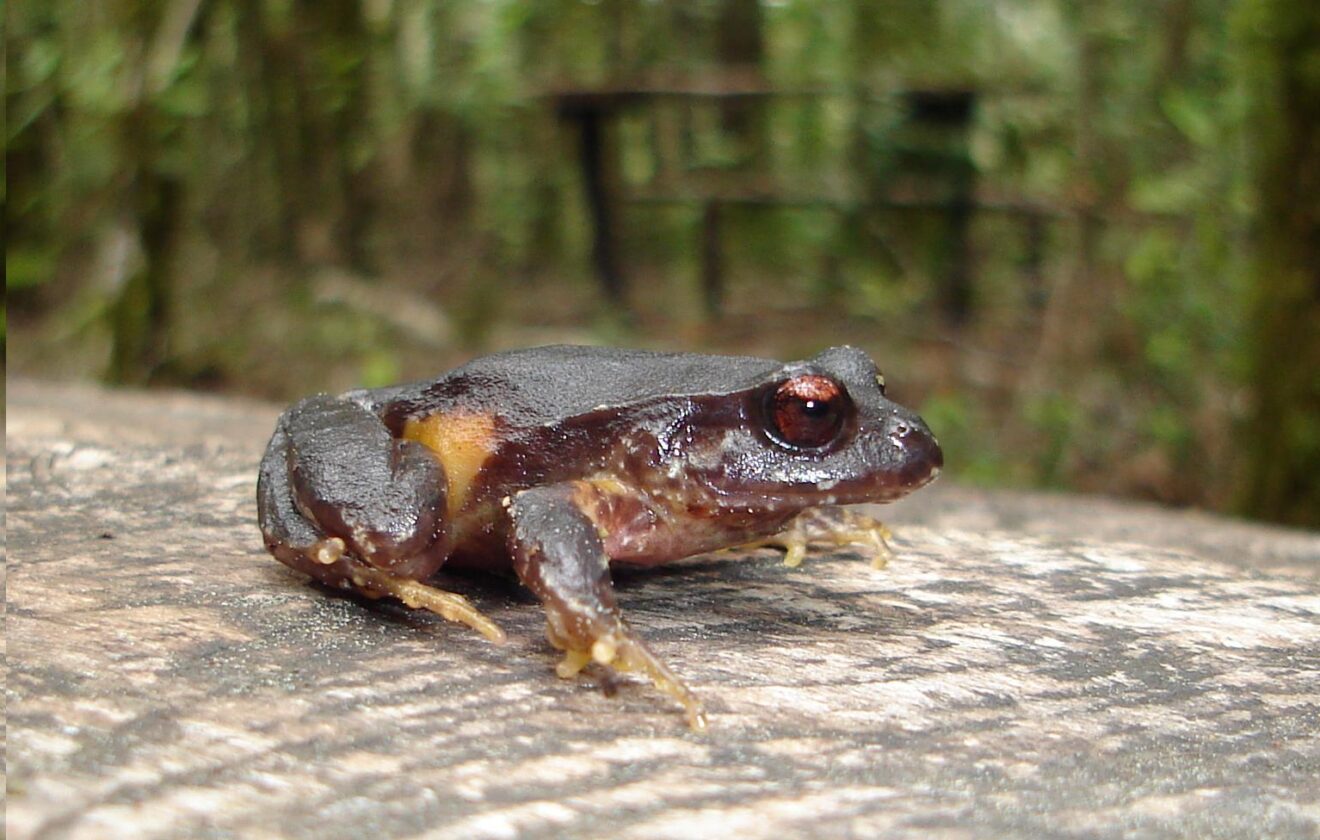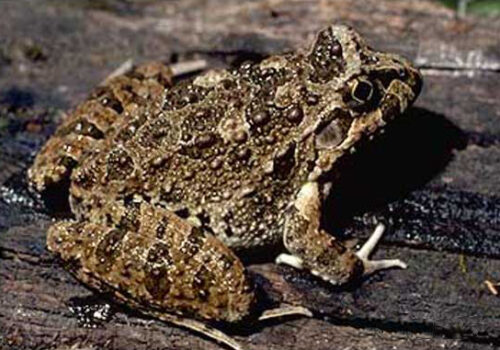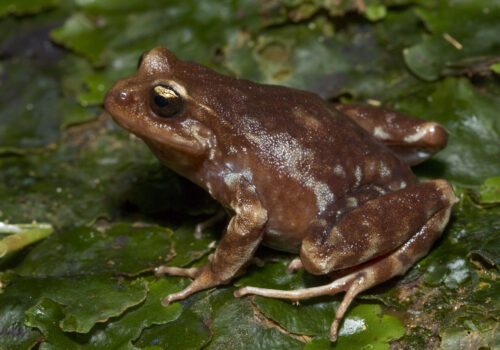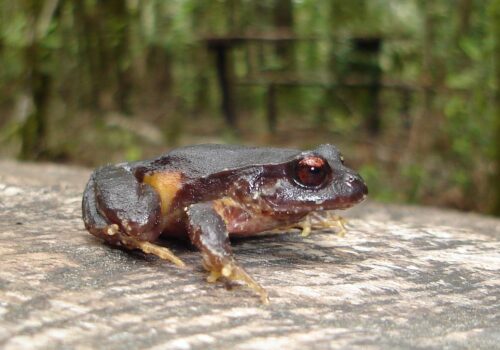Eupsophus insularis: The Enigmatic Amphibian Treasure of Chile’s Forests#
Hidden deep within the lush, dripping canopies of Chile’s temperate rainforest, a small and intriguing character goes about its secretive life largely unseen, yet vital in maintaining ecosystem balance. Eupsophus insularis—the insular ground frog—is a captivating little amphibian whose subtle beauty and complex behaviors remain a fascinating subject of study, yet often escape notice. While this tiny guardian of the forest floor appears modest to the casual observer, its unique adaptations and ecological significance capture the imagination of naturalists, biologists, and conservationists alike. But what makes Eupsophus insularis so special, and why does its story deserve to be told?
Native exclusively to the remote islands and coastal forests of southern Chile, Eupsophus insularis blends seamlessly into the wet leaf litter, shadowed by towering ancient trees shrouded in mist. From its unique breeding behaviors to its sensitive response to environmental disruption, this frog species provides us with critical insights into the health of its increasingly threatened habitat. Before we delve deeper into its intriguing life history and ecology, let’s first set the scientific stage.
Taxonomy and Classification#
Eupsophus insularis belongs to the family Alsodidae, an interesting group of frogs native primarily to southern South America. Within this family, the genus “Eupsophus” represents a distinctive lineage adapted specifically to the cool, damp forest habitats that are iconic of southern Chile and neighboring regions of Argentina. First described by renowned biologists Grandison in 1961, Eupsophus insularis is part of a fascinating genus known for elaborate parental care behaviors and notably secretive, cryptic lifestyles.
This genus includes several closely related yet distinct species, often separated visually only by minute differences in coloration patterns, vocalization frequencies, and geographical range. However, genetic analyses confirm the unique identity of Eupsophus insularis, underscoring the importance of preserving such nuanced biodiversity. In essence, this tiny frog represents an evolutionary masterpiece, sculpted carefully over thousands of years of isolation and environmental specialization.
Natural Habitat#
If one wishes to truly appreciate Eupsophus insularis, one must journey to the lush, rain-fed forests scattered along the rugged coastlines and islands of southern Chile. Regions like the Chiloé Archipelago and other smaller coastal islands provide the quintessential home for this species. These temperate rainforests, frequently bathed in cooling ocean mists and gentle rains, create the perfect conditions for moisture-dependent amphibians. Here, towering hardwood trees mingle with verdant ferns, moss-covered rocks, and thick layers of fallen leaves, creating intricate microhabitats that shelter countless living organisms—including this elusive ground frog.
Eupsophus insularis prefers to dwell among the damp foliage and decaying vegetation that carpets the forest floor, rarely venturing far from the cover and humidity provided by this habitat. Fallen logs, dense understory, and natural depressions become crucial microhabitats where moisture, temperature, and protection from predators are optimal. Their affinity for these dark, moist hideaways means these frogs can be difficult to spot, although their presence is often revealed in their rhythmic calls emanating from hidden recesses within the forest’s understory.
Such specific habitat preferences make this amphibian incredibly sensitive to environmental change. Even slight fluctuations in humidity, forest cover, or temperature can drastically affect its survival. Understanding its habitat requirements thus serves as a valuable barometer for forest ecosystem health.
Physical Characteristics#
At first glance, Eupsophus insularis does not dazzle like vibrant, poison dart frogs from more tropical settings. Instead, it exhibits subtle sophistication, blending seamlessly into its forest floor backdrop. Adults generally measure around 30 to 45 millimeters in snout-to-vent length, achieving modest sizes compared to other frogs. Their most striking feature lies in their intricate camouflage—their bodies bear shades of light brown, grey, and olive tones patterned elegantly with darker speckles and streaks.
This cryptic coloration is not simply an aesthetic trait; it represents a crucial survival strategy. Subtle brownish hues with faint mottled patterns mimic fallen foliage and moist soil—natural camouflage allowing the frog to sit motionless, blending invisibly into its surroundings. Eyes protruding slightly from atop the head, golden-coppery irises, and horizontally elliptical pupils enhance the frog’s keen lookout for predators and prey without breaking concealment.
Their relatively sturdy hind limbs, coupled with short toes with rounded tips lacking significant webbings, underline their terrestrial habits—preferring slow strides and leaps along the leaf litter rather than ambitious aquatic adventures or arboreal escapades. Such adaptations reflect the specialized behavioral nuances of a species evolved to master the challenges of the humid southern forest ecosystem.
Behavior and Life Cycle#
A Symphony in the Understory: Courtship and Calling#
Eupsophus insularis leads a quintessentially secretive amphibian lifestyle, yet during breeding seasons, generally corresponding with periods of increased rainfall, its presence becomes audibly clear. Male frogs flock to moist hiding spots among leaf litter or beneath quiet logs, where they emit soft but distinct calls—a rhythmic, resonant coo often described as a subtle musical melody heard best in echoes and faint whispers through the dense foliar curtains of their forest habitats.
Females, drawn by these earnest serenades, cautiously approach, selecting suitable partners based on calling strength and frequency. The courtship rituals of Eupsophus insularis, filled with an intricate orchestration of vocalizations, discreet physical interactions, and positional displays, hint at deeper complexities still being uncovered by herpetologists today.
Meticulous Parents: Egg-laying and Tadpole Development#
In a remarkable spectacle of amphibian parenthood, female frogs lay their eggs in concealed underground nests—hidden shelters painstakingly constructed amid soil depressions beneath logs, stones, or extensive leaf cover. A single female may produce 20-50 large eggs per clutch, each carefully safeguarded from external harm.
Unlike many amphibians who entrust their eggs to fate, Eupsophus insularis exhibits devoted parental care. Both male and female may vigilantly guard their nests, maintaining optimal moisture conditions and warding off potential predators or threats to their vulnerable offspring. The tadpoles develop entirely within this protected micro-environment—uniquely bypassing open water and instead undergoing their metamorphosis safely within the subterranean chambers, emerging as fully terrestrial juveniles ready to explore their woodland home.
Ecological Role#
Within its forest ecosystem, Eupsophus insularis plays a pivotal yet often overlooked ecological role. These frogs help control insect populations, preying predominantly upon forest-floor invertebrates including beetles, worms, ants, and smaller arthropods. By managing insect populations, they contribute fundamentally to ecological stability—supporting plant health, nutrient cycling, and thus indirectly benefiting countless other forest species.
Simultaneously, as prey, they sustain higher-level predators such as native birds, small mammals, and larger amphibians, weaving intricate ecological connections within their complex natural web. Their health and presence thus reflect wider environmental health, proving invaluable in conservation monitoring.
Threats and Conservation Status#
Despite their critical role, Eupsophus insularis faces escalating threats from human activity. Habitat degradation driven by farming expansion, logging, and infrastructure development relentlessly erodes their already limited habitats. Climate change projections predict increasingly erratic rainfall and temperatures, drastically affecting these moisture-dependent frogs. Current IUCN assessments categorize this species as Vulnerable, signaling a vital need for conservation interventions.
Today, local conservation groups and international cooperation continuously work towards habitat restoration, research, and public awareness campaigns to ensure these delicate amphibians persist in a rapidly changing world.
Cultural and Scientific Significance#
In regional Chilean communities, amphibians like Eupsophus insularis symbolize the health and continuity of local ecosystems. Their presence is deemed indicative of balanced forest conditions, further underscoring their importance. Scientifically, studies involving this species contribute profoundly to broader understandings of ecological resilience, climate adaptability, and evolutionary biology.
Conclusion#
Eupsophus insularis, while small and unassuming, quietly embodies nature’s intricate beauty, ecological interdependence, and vulnerability. By acknowledging its significance, respecting its habitat, and advocating for conservation, we help protect not just this frog—but also safeguard entire ecosystems precious to life on Earth. Let this elusive frog inspire collective appreciation and action, ensuring future generations might still hear its subtle music echoing through the misty forests of Chile.















